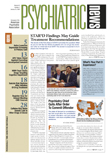Teen drinking continued to drop gradually in 2005, and while cigarette use dropped for 10th and 12th graders, nearly a quarter of teenagers are smoking by the time they leave high school, according to the results of the 2005 Monitoring the Future Survey.
In 2005, 17 percent of eighth graders, 33.2 percent of 10th graders, and 47 percent of seniors reported using alcohol in the month preceding the survey.
These levels are down one to two percentage points from 2004 and down considerably from recent peaks in 1999, when 24 percent of eighth graders, 40 percent of 10th graders, and half of all seniors reported past month use of alcohol.
In 2005, 14 percent of eighth graders, 34.2 percent of 10th graders, and 47.7 percent of 12th graders reported being drunk in the past year.
Binge drinking, defined as consuming four or more alcoholic beverages for women and five or more for men, has been declining at a much slower rate. According to a report on the findings, there was a nonstatistically significant drop in binge drinking in all three grades between 2004 and 2005. Going back several years, binge-drinking rates have remained steady.
In 2005, 10.5 percent of eighth graders, 21 percent of 10th graders, and 28 percent of seniors reported binge drinking in the previous two weeks.
At a press conference in Washington, D.C., last December announcing the findings, National Institute on Alcohol Abuse and Alcoholism Director Ting-Kai Li, M.D., said that binge drinking “accounts for a lot of the immediate harm that comes to those who drink and those around them.”
He also pointed out that “binge drinking predisposes our youth to alcohol addiction.”
Just as alcohol use has declined, so has cigarette use among American teens since usage rates peaked in the mid-1990s, according to a report on the survey's findings.
However, that decline halted among eighth graders, whom the report called the “bellwethers” of smoking trends among teens.
In 2004, 9.2 percent of eighth graders, 16 percent of 10th graders, and 25 percent of 12th graders reported smoking in the month previous to the survey. Last year, the rate remained the same for eighth graders but dropped by one or two percentage points for students in the upper grades.
Nonetheless, the finding that nearly one-fourth of teens are smoking by the time they leave high school is worrisome. “That rate is unacceptable,” said Lloyd Johnston, Ph.D., the study's principal investigator.
Johnston explained that the level of perceived risk associated with smoking, which had been increasing over the past several years, halted in the upper grades, and “personal disapproval of smoking halted among eighth graders this year.”
He also said that a “substantial decline” in the funding of antismoking advertising may have contributed to the end of smoking declines in younger students.
More information about the 2005 Monitoring the Future Survey is posted on the Web at<www.monitoringthefuture.org>.▪

